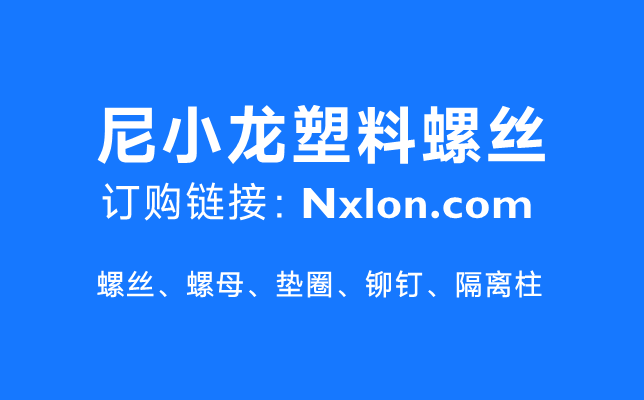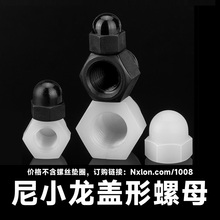Threaded Rod Lead screw Screw rod
©Nxlon.com D/T:

The threaded rod, also known as the lead screw or screw rod, is a part widely used in the mechanical field. The following is a detailed introduction to the threaded rod:
Structural Features of the Threaded Rod
Thread Structure: The surface of the threaded rod has continuous spiral protrusions, namely threads. Parameters such as the shape, size, and pitch of the threads come in various specifications according to different application requirements. Common thread profiles include triangular, trapezoidal, rectangular, etc. Triangular threads have good self-locking performance and are often used for connection and fastening; trapezoidal threads have higher transmission efficiency and can bear large axial forces, so they are often used in transmission mechanisms; rectangular threads have the highest transmission efficiency, but they are more difficult to manufacture and maintain, and are relatively less used.
Shape of the Rod Body: Generally, it is cylindrical. Some are designed to be conical or in other shapes according to special requirements. Cylindrical threaded rods are easy to process and are the most widely used; conical threaded rods can be used in some occasions that require gradually changing diameter connections or special positioning.
Working Principle of the Threaded Rod
Connection and Fastening Function: When the threaded rod is matched with a nut, by rotating the nut, the nut moves on the threads of the threaded rod. Using the friction and self-locking characteristics of the threads, two or more components are tightly connected together to achieve the purpose of fastening. This connection method can withstand a certain amount of tensile and compressive forces to ensure the reliability of the connection. For example, in the assembly of mechanical equipment, threaded rods and nuts are often used to fix various components.
Transmission Function: In some transmission mechanisms, the threaded rod acts as an active or passive part. Through the interaction of the threads with other threaded components (such as nuts or nut seats in the lead screw assembly), the rotational motion is converted into linear motion, or the linear motion is converted into rotational motion. For example, in the feed mechanism of a machine tool, the motor drives the threaded rod to rotate, and the nut drives the worktable to perform linear feed motion, achieving precise machining positioning.
Advantages of the Threaded Rod
Precise Transmission: The transmission of the threaded rod can achieve high-precision linear motion or angular adjustment. By precisely machining the threads, the moving distance and speed of the nut on the threaded rod can be controlled, thus achieving precise position control. This makes the threaded rod widely used in some equipment with high precision requirements, such as numerical control machine tools and measuring instruments.
Strong Load-bearing Capacity: It can bear large axial and radial forces. Through appropriate material selection and structural design, the threaded rod can meet the working requirements under different load conditions and is suitable for various heavy machinery and industrial equipment.
Simple Structure: The structure of the threaded rod is relatively simple, the manufacturing process is relatively mature, and the cost is relatively low. At the same time, its installation and maintenance are also relatively convenient, and no complex auxiliary equipment or special maintenance technology is required.
Application Fields of the Threaded Rod
Mechanical Manufacturing: It is used in the feed system of machine tools, the lifting mechanism of the worktable, the transmission device of automatic production lines, etc. In machine tools, the threaded rod precisely controls the movement of the tool or the workpiece to ensure the machining accuracy; in automatic production lines, the threaded rod drives the conveyor belt or fixtures to perform linear motion, realizing the transportation and positioning of materials.
Construction Engineering: In construction, it is often used in equipment such as jacks and elevators to realize the lifting and lowering of heavy objects. For example, in the installation and maintenance of building structures, jacks are used to lift or lower heavy objects through the rotation of the threaded rod, facilitating construction operations.
Automotive Industry: It is applied to the seat adjustment mechanism and window lifting mechanism of automobiles. The threaded rod in the seat adjustment mechanism can achieve precise adjustment of the seat in different directions to meet the seating needs of different drivers; the threaded rod in the window lifting mechanism drives the window glass to move up and down, realizing the opening and closing of the windows.
Aerospace: It is used in the landing gear retraction mechanism of aircraft and some transmission components in the flight control system. The threaded rod in these key parts needs to have high strength, light weight, and high reliability to ensure the safe and reliable operation of the aircraft under various complex flight conditions.
Material Selection of the Threaded Rod
Carbon Steel: It has high strength and hardness and a low cost, and is suitable for threaded rods under general loads and working environments. Such as Q235, 45 steel, etc., which are often used for the connection and transmission of threaded rods in general mechanical manufacturing.
Alloy Steel: With the addition of alloy elements such as chromium, nickel, and molybdenum, it has higher strength, toughness, and wear resistance and can bear large loads and harsh working conditions. For example, alloy steels such as 40Cr and 35CrMo are often used for high-performance threaded rods in heavy machinery, aerospace, and other fields.
Stainless Steel: It has good corrosion resistance and oxidation resistance and is suitable for threaded rods working in corrosive environments such as humidity, acids, and alkalis. Such as 304 and 316 stainless steel, which are often used for threaded rods in industries such as food processing, chemical engineering, and medical equipment to prevent the impact of corrosion on the performance and service life of the threaded rod.
尼小龙塑料螺丝-塑料螺母-尼龙垫圈-塑料铆钉
尼龙飞机头内螺纹扣式六角隔离柱
订购链接:Nxlon.com/1005
尼龙飞机头内螺纹扣式六角隔离柱是一种用于电子设备等领域的塑料紧固件,一端为类似飞机头的形状塑料铆钉,这种造型便于扣紧电路板等部件。使用时,先将基板钻孔,再将隔离柱插入孔中,飞机头部分可以卡紧电路板,起到稳固的作用。
尼小龙塑料SB通孔扣式护线套
订购链接:Nxlon.com/1051
绝缘塑料SB通孔扣式护线套16-19-22-25尼龙电缆电源线塑胶线孔盖质:尼龙,颜色:黑色、白色;规格:SB-16、SB-19、SB-22、SB-25等。
R3055-塑料铆钉-尼龙铆钉
订购链接:Nxlon.com/3055
R3055-塑料铆钉-尼龙铆钉塑料铆钉-尼龙铆钉-汽车塑胶铆钉-尼小龙尼龙铆钉R2.6R3.5R4R5塑胶柳钉子母铆钉快捷紧固件塑料卡扣。
绝缘塑料法兰螺母
订购链接:Nxlon.com/1034
尼龙法兰螺母的螺纹规格有:M3*0.5、M4*0.7、M5*0.8、M6*1.0、M8*1.25、M10*1.5、M12*1.75等白色尼龙螺母、黑色塑料螺母、透明塑料法兰螺母。
内3.2外7.0黑色塑料直通柱ABS隔离柱
订购链接:Nxlon.com/1013
国标圆形直通柱垫片垫圈材质:塑料ABS树脂;内径:M3系列=3.2mm,M4系列内径=4.2mm;外径:M3M4系列外径都是7mm;高度:2到15mm
R4060-塑料铆钉-尼龙铆钉
订购链接:Nxlon.com/4060
R4060-塑料铆钉-尼龙铆钉塑料铆钉-尼龙铆钉-汽车塑胶铆钉-尼小龙尼龙铆钉R2.6R3.5R4R5塑胶柳钉子母铆钉快捷紧固件塑料卡扣。
塑料螺丝保护套-螺母保护帽
订购链接:Nxlon.com/1035
塑料螺丝帽保护套-塑料螺母保护帽M8M10六角塑料螺母保护帽外六角塑料螺丝盖罩螺栓螺丝装饰防尘套,尼小龙螺母保护帽材质:聚丙烯 Polypropylene,型号:S-12-PP, S-13-PP, S-14-PP, S-16-PP, S-17-PP









